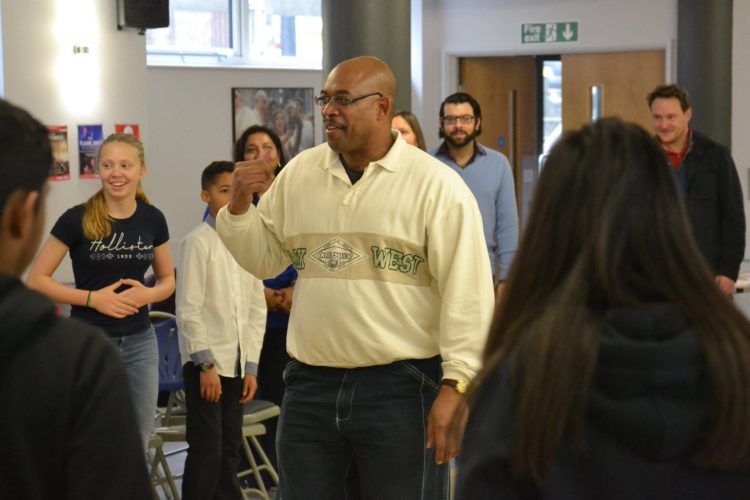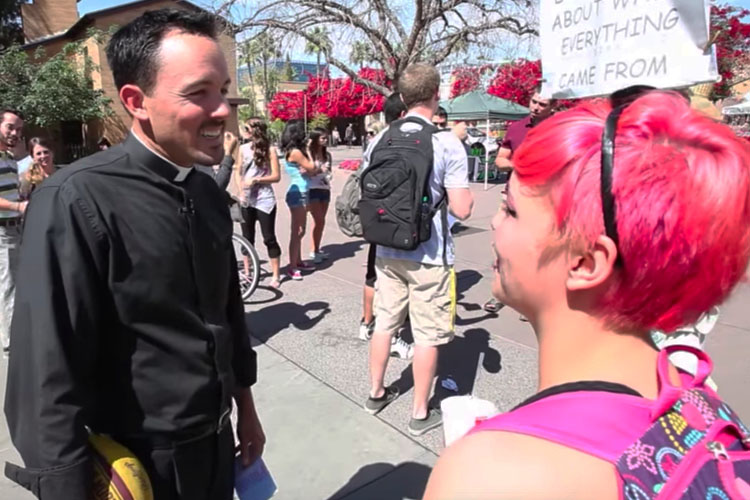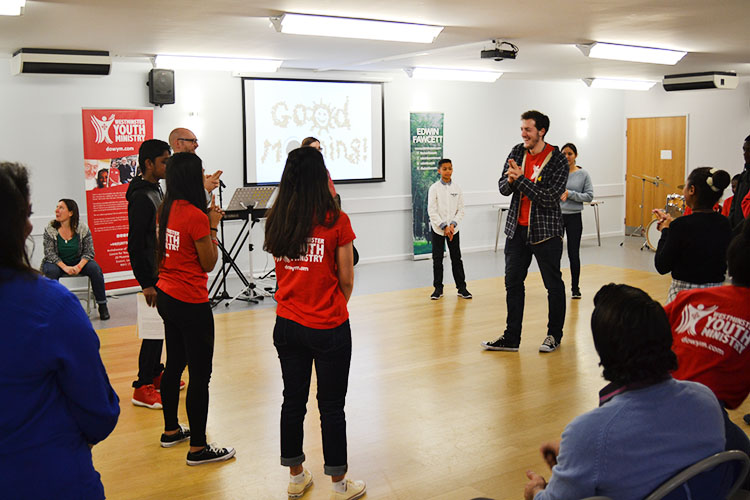- Theme
- Running a Youth Group
- Type
- How To
If you live in the Diocese of Westminster and want to start something for young people, we at the youth service are dedicated to helping you support the young people in your parish in the best way possible.
One of the main ways we can help is by providing on-the-ground, face-to-face support and resources for starting a group in your parish. To access this, contact us at youth@rcdow.org.uk and we will support you through the whole process of set-up and can provide ongoing support thereafter.
If, however, you live somewhere where there is not a youth service to help, here is a step-by-step guide on how to set up a youth group. We would still like to help you as much as possible so if you have any queries or would like advice please feel free to email us wherever you are or visit us!
Step 1: Raising the idea
When you have the idea to start a youth group, the first thing you’ll want to do is try and get as many people in the parish as possible to be behind the idea. Here are helpful ways of going about this:
- First, speak with your parish priest and put forward the idea that you would like to start a group for the young people of the parish/local area. If he is supportive of this vision, ask if you can speak at the Sunday Masses to invite those who are interested in creating something for the youth to come to a meeting at a time and location you can arrange with the priest.
- When inviting people during the talk, it is important to try and make it sound like a whole parish mission that anyone can get involved with, no matter their age.
- Especially important is that you invite the young people themselves to come and have a say in their own group’s future.
- Make sure to ask those who will be unable to get involved in the meeting to pray for the process and support the youth group in this way.
- A good time to set the date of the meeting is a week or two after you’ve given the talk, after one of the Sunday Masses.
Step 2: Understanding visions
Once you’ve set the time for a meeting and people have turned up, you now need to understand were everyone is coming from. People will likely come with very different visions of what they want the group to look like and it’s important that everyone feels listened to. Here are some suggestions on how best to make this happen:
- Start with introductions; who are people and maybe an interesting fact about them. This works best in a ‘going around the circle’ scenario where you start first and then go around the circle with everybody taking it in turns to introduce themselves.
- Several crucial things to understand are:
- What age range people thing the group should be.
- What people think the general running of an evening should look like? E.g. How much socialising is involved, how much formation is involved, how much led activity is there by comparison to just letting them entertain themselves with what you provide?
- How often, what time and what day should the group meet on?
- Who would be willing to join a leadership team to organise the group? (The more who want to do this the better as many hands make light work!)
- The best way to ensure a healthy and productive discussion is to invite the Lord to guide the discussion to what he desires. Begin your meeting after introductions, with a time of prayer in which you ask God for the graces and blessings your meeting will need.
- You may like to have a large piece of paper on which you can mind-map what everyone’s thoughts are. If you have a large group, you may like to split them into several smaller groups which can mind-map by themselves and then report back to the group at large afterwards.
Step 3: Unifying the vision
Now that ideas are being traded and expressed, it’s important to try and start to unify the vision. This can often be done by seeing what the most common views are with regards to the different categories. Likely, there will be many, many good ideas, but it is important not to try and have one single youth group accommodate all of them, else it will lose its identity and be much harder to draw people to. If there are many different options focus on one in particular; once you have one group up, running and established you can start other groups later that encompass other visions. Here are some things to be aware of as you unify your vision:
- Age brackets: Different age brackets socialise and see themselves very differently. Unless you’re doing young adults where the age brackets can be as large as 18-35+, most young people are more likely to go to a group that focuses on their ‘key stage’. Key stage age bands are: 7-11, 11-14, 15-18. When an age band gets to large, younger children are scared off by the older, and older young people won’t go as they feel they have out-grown being in a group with younger children. Additionally, it will also make planning session content much harder if the age bracket is too large. Your best bet is to choose a single age bracket, make it work well and then add additional groups when the need arises.
- Regularity: Depending on your group, different regularities will work better for different people. Most groups tend to be once a month or fortnight. Once you have decided on this, try and make it something easy to remember, like the first Wednesday of the month or the first and third Saturday. While the timing that people want is important, what is even more crucial is what times the location you’re running it is free. If you are running the group in the parish hall, make sure to check with the parish priest or secretary what days are actually regularly free!
- Content: The regular content of your session will largely depend upon what you discuss in this meeting. Different content will be better for different young people and groups we support range from simply being a safe space off the streets for young people to hang out in, to formation and prayer sessions that spend most of their time in Eucharist adoration! When listening to the ideas of the larger group, it’s important to keep bringing different points to prayer and see what God’s plan is for the group. Like with the age bracket, try to ensure that the group’s identity is clear and while individual session content can be decided at a later date, try to decide on some recurring content that you can provide e.g.:
- Will you have prayer and, if so, for how long? Often we find a minimum of five minutes at the end is a nice way to start them developing their prayer life.
- What activities will you lay on for them during free periods? Table tennis, Football, Table football, Pool, Arts and craft, chill out room, Wii, Xbox etc.
- Do you want a tuck shop?
- Leadership Team: Hopefully this meeting will bring together many people interested in supporting the group. Make sure to get the email address of all the adults who have attended. Try to form a leadership team around you from those who are willing to volunteer at the group. While it is likely not every volunteer will be able or willing to be part of the leadership team, the more people you can have who are willing to help plan session with you the better.
- End with Prayer: Having unified a vision of the future finish with a prayer of thanks to God for his guidance in this time and his protection over the journey to come.
Step 4: Moving the vision forward
- Getting equipment: While the parish may be generous enough to lend you funds to ‘kit out’ your youth group, your best source for equipment will be donations. Ask for specifics in the parish newsletter and maybe even get your priest to make requests at the end of Mass during the notices. Fantastic deals can be found on eBay and in second-hand or charity shops.
- Sorting out DBS checks: Everyone working with young people will need a DBS check. All parishes will have a safeguard representative and, chatting with them, you’ll be able to have this all sorted.
- Sorting storage: If you have equipment, you will need storage onsite or else it will likely be unfeasible to regularly have it at the youth group. Chat with your parish priest about where things could be stored.
- Sorting a registration form: It’s important to have good records, particularly when it comes to keeping our young people safe. A registration form should be the first point of call and all young people on the premises should have one filled in and completed by a parent/guardian. We have a pre-written one you can use here. Make sure to have a stack of these ready to give to young people when they first come to the club. When you receive these back they must be kept somewhere in the parish under lock and key.
- Sorting out who will arrive early to unlock the hall and set up: The more the merrier but if you’re running the group, you probably want to be at the hall at least 15-30 minutes before they arrive to set up any activities. It is often very useful to have someone reliable looking after the keys to prevent anyone being locked out etc.
- Setting the first date: Once things start to get sorted, agree with your leadership team and volunteers when the first meeting will be. Try to mark it as an important day for everyone to be at; as time goes by you may have a rota for who is working what sessions but, to make everyone feel involved, invite everyone to come to this first session.
- Advertising the first date: With the date set, advertise in as many places as possible. Parish shout-outs and newsletters, emailing the local schools of the age range you’ll work with and maybe creating a poster to go out to these places and up on the parish bulletin board.
- (Eventually) Creating a rota: Once you have enough volunteers you will probably want to create a rota as to who is helping what evenings. This makes life a lot easier for everyone, but especially the leadership team! As a general rule of thumb, you want to have a minimum of four responsible adults on a night. This means that in the case of a child needing to be taken home or some other incident that will remove a leader or more from the group, you still have enough leaders to effectively supervise the group. Try also to have at least one male and one female responsible adult. This makes dealing with certain situations easier by far and also some young people respond better to adults of a certain sex.



